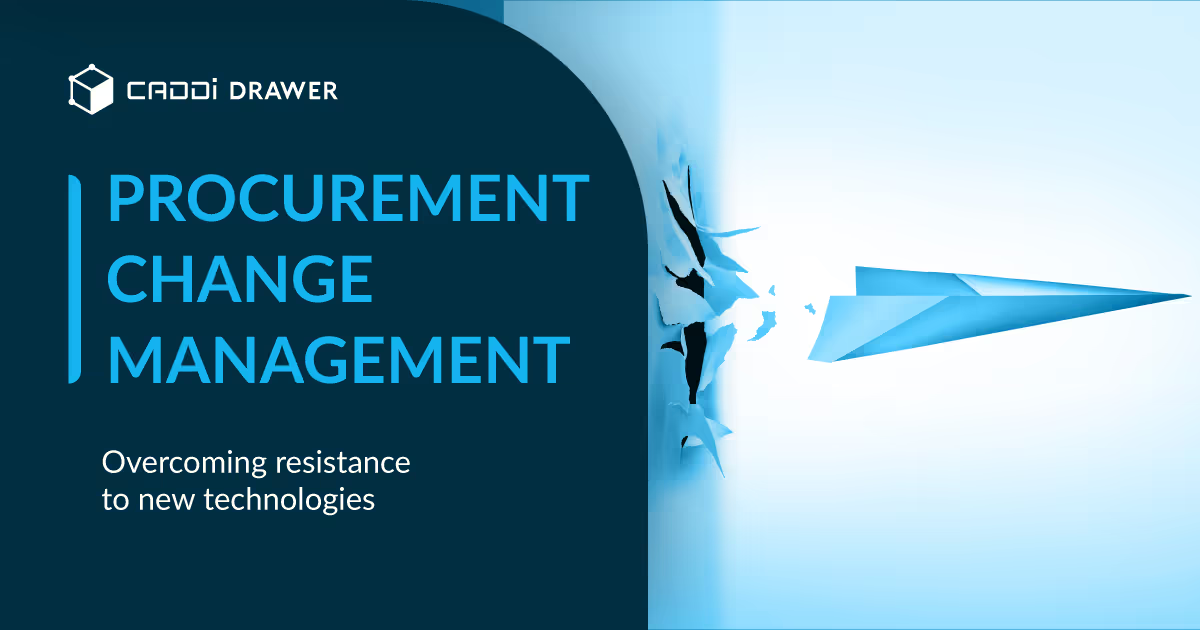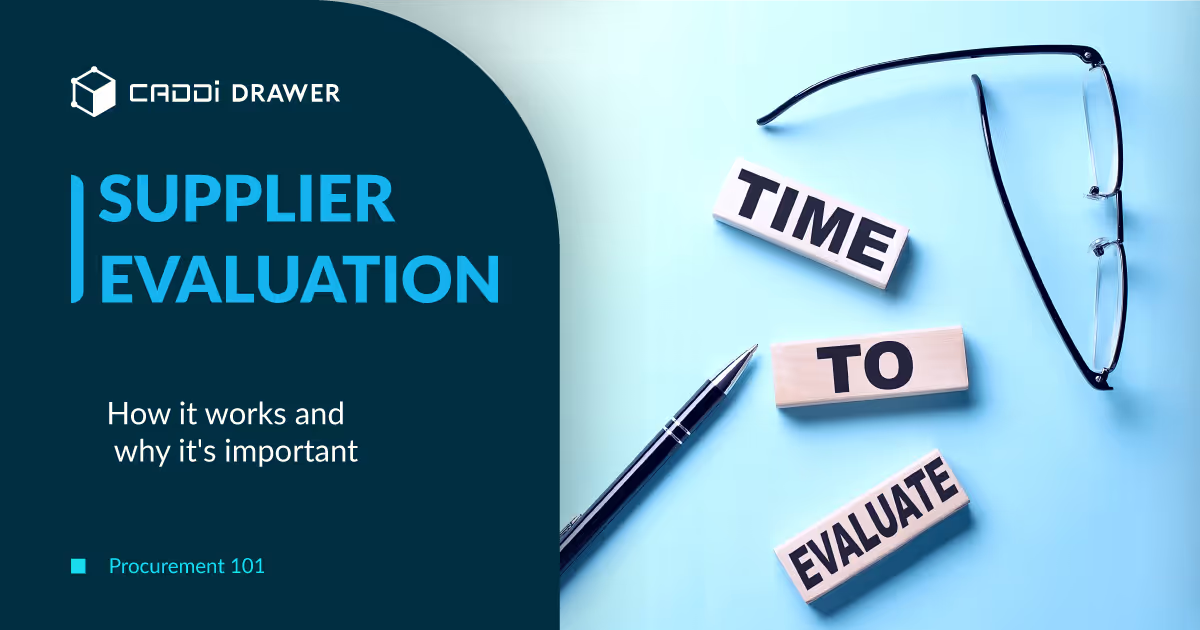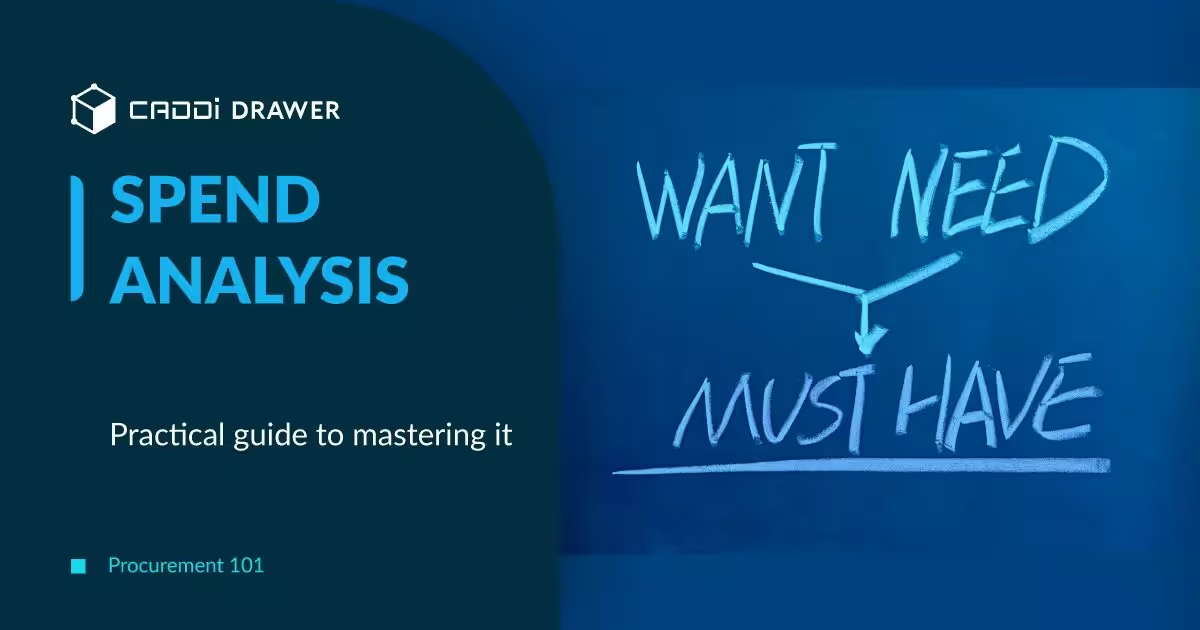Procurement Change Management: Overcoming resistance to new technologies

Table of Contents

Introduction
Some common technologies used in procurement include e-procurement systems, contract management software, procurement intelligence tools, and supplier management platforms.
While new technologies offer many potential benefits like process automation, cost savings, and data insights, they also require change management to get user adoption. The procurement department often faces resistance when implementing a new system, as people get accustomed to status quo. This resistance can limit the ROI of new investments if not properly addressed. Successfully rolling out new procurement technologies requires a thoughtful change management approach to overcome resistance.
Why New Technologies Face Resistance
Implementing new technologies can often be met with resistance in organizations. There are a few key reasons for this:
- Fear of the unknown – People are naturally averse to major changes when they don’t fully understand what’s involved or how it will impact them. New technologies can seem intimidating or scary if people don’t know what to expect.
- Disruption to workflows – Adopting new tech usually requires changing established workflows and processes. This disrupts habits and routines, which makes people uncomfortable. They have to put in effort to learn and get used to new ways of doing things.
- Perceived complexity – If a new technology seems overly complex, people will resist having to learn and use it. They don’t want to spend time and effort figuring it out when their current tools and methods work fine. The learning curve can appear steep.
Understand and Involve Stakeholders
When implementing new procurement technologies, it’s crucial to identify key stakeholders who will be impacted by the change and understand their perspectives. This includes procurement team members who will use the new systems, as well as internal clients and vendors.
- Identify key stakeholders affected – Make a list of all stakeholders, both internal and external, who will be affected. This ensures no one is left out of the process.
- Understand their concerns and needs – Have open discussions to learn about any apprehensions, worries or requirements stakeholders may have regarding the technology change. This provides insight into potential adoption challenges.
- Involve them in the change process – Give stakeholders an active role, such as being part of a project team, pilot program or testing group. This creates buy-in and gives them a voice in shaping the change, rather than simply being passive recipients.
Getting stakeholder input and participation early in the process helps drive engagement, ensures their needs are met, and reduces resistance down the road.
Communicate Early and Often
Getting buy-in for new procurement technologies starts with clear and consistent communication. Change leaders should share the rationale and expected benefits of the new system as early in the process as possible. This gives stakeholders time to understand why the change is happening and how it will impact their day-to-day work.
Provide frequent updates on the project timeline, training schedules, and rollout plans. Be transparent about potential challenges and delays. Encourage feedback through surveys, focus groups, pilot tests, or informal conversations. Make sure people’s voices are heard and concerns addressed.
Early, open and ongoing communication helps build trust in the change process. When people feel informed and included, they are less likely to resist the adoption of new tools and workflows. Take the time to explain what is changing, why it matters, and how you will support a smooth transition.
Offer Proper Training
Proper training and support is essential for getting users onboard and comfortable with new technologies. Procurement teams should develop comprehensive training programs that include:
- Hands-on training sessions – In-person, interactive sessions allow users to try the new system and ask questions in real-time. Training should start with basics then build up to more advanced features.
- Quick start guides and tutorials – Simple, step-by-step instructions help users get started on their own time. Screenshots and videos can make these resources more engaging.
- Ongoing support resources – A knowledge base, chat/email support, and periodic refresher trainings will help sustain adoption. Users can get assistance when needed after the initial training.
Investing time and resources into training demonstrates the importance of the new system and sets users up for success. Hands-on practice in a low-pressure environment builds familiarity and confidence.
Set Clear Goals and Timeline
Having clear goals and a defined timeline is essential for driving procurement technology adoption. Leaders should:
- Define clear objectives and key performance indicators (KPIs) to track progress. What specifically is the technology intended to improve? Cost savings? Efficiency? Having quantitative goals helps motivate teams.
- Establish a detailed project plan and milestone timeline. Break the rollout into manageable phases so teams can focus step-by-step rather than getting overwhelmed by the big picture.
- Celebrate wins along the way. As milestones are hit, take time to recognize teams and build confidence. Early successes will generate momentum for continued adoption.
- Communicate timelines proactively so teams know what to expect. Avoid surprises that could undermine morale.
- Be flexible on timelines if certain phases take longer than expected. Rushing adoption risks frustration and resistance. Listen to feedback and adjust timelines accordingly.
- Keep leadership updated on progress versus goals. This ensures continued buy-in and support.
With defined goals, milestones, and a commitment to regular communication, procurement teams will drive steady progress on adopting new technologies successfully.
Address Concerns
It’s natural for people to be hesitant about adopting new technologies and changing familiar processes. When introducing procurement technology changes, expect concerns and even resistance.
To help overcome this, first acknowledge the concerns being raised. Don’t dismiss or downplay them. Recognize that the change creates uncertainty and may require new skills.
Then provide reassurance that support and training will be available during the transition period. Highlight the benefits of the technology and how it will make tasks easier in the long run. Offer solutions to address specific worries – for example, phasing in the rollout or having tech experts provide extra assistance at the start.
When facing persistent resistance, remain patient but also persistent in moving forward. Keep communicating the reasons for the change and how it aligns with larger goals. With time and exposure to the new technology, most people will adjust. Stay focused on making the transition as smooth as possible.
Secure Leadership Buy-In
Getting leadership buy-in early in the process is crucial for overcoming resistance to new procurement technologies. Executives and managers set the tone and culture in an organization, so having them be champions of change can influence employees to be more open.
Focus on emphasizing the key business benefits the new technology will provide, such as increased efficiency, cost savings, improved compliance, and reduced risks. Quantify the expected impact if possible to make it more tangible. Schedule presentations to demonstrate the technology and how it will benefit the organization.
Involve leaders in the project planning and get their input on timelines, training, and change management activities. Having their endorsement and visible participation will signal to employees that this is an organizational priority with full support behind it. Soliciting feedback also creates ownership.
With executives on board early and acting as sponsors, resistance can be better managed across the implementation process. Employees will trust the technology more if leaders express confidence in it and model adoption themselves.
Conclusion
Successfully implementing new procurement technologies requires effective change management to overcome natural resistance. Two vital keys to success are involving stakeholders from an early stage and securing strong leadership buy-in.
In the context of procurement operations, it is essential to have advocates who will drive the adoption and embedment of new technologies. These champions should not be identified only at the implementation stage; rather, they need to be cultivated from the early stages of the project by involving them in discussions and decision-making. Without their motivation and strong advocacy, the transformation efforts are bound to fail.
Furthermore, securing leadership buy-in is crucial because the introduction of new technologies often entails short-term operational stress. Interdepartmental and managerial discussions may not be sufficient to balance the trade-offs between short-term and long-term goals, leading to project stagnation. Strong leadership is necessary to overcome these challenges by providing a clear vision of the desired future state and guiding the organization through the transition.
By focusing on stakeholder involvement and leadership alignment from the beginning, while also employing other change management best practices, procurement teams can successfully drive the adoption of new technologies. This proactive, people-centric approach is key to overcoming resistance and realizing the full potential of digital procurement transformation.
Introduction
Some common technologies used in procurement include e-procurement systems, contract management software, procurement intelligence tools, and supplier management platforms.
While new technologies offer many potential benefits like process automation, cost savings, and data insights, they also require change management to get user adoption. The procurement department often faces resistance when implementing a new system, as people get accustomed to status quo. This resistance can limit the ROI of new investments if not properly addressed. Successfully rolling out new procurement technologies requires a thoughtful change management approach to overcome resistance.
Why New Technologies Face Resistance
Implementing new technologies can often be met with resistance in organizations. There are a few key reasons for this:
- Fear of the unknown – People are naturally averse to major changes when they don’t fully understand what’s involved or how it will impact them. New technologies can seem intimidating or scary if people don’t know what to expect.
- Disruption to workflows – Adopting new tech usually requires changing established workflows and processes. This disrupts habits and routines, which makes people uncomfortable. They have to put in effort to learn and get used to new ways of doing things.
- Perceived complexity – If a new technology seems overly complex, people will resist having to learn and use it. They don’t want to spend time and effort figuring it out when their current tools and methods work fine. The learning curve can appear steep.
Understand and Involve Stakeholders
When implementing new procurement technologies, it’s crucial to identify key stakeholders who will be impacted by the change and understand their perspectives. This includes procurement team members who will use the new systems, as well as internal clients and vendors.
- Identify key stakeholders affected – Make a list of all stakeholders, both internal and external, who will be affected. This ensures no one is left out of the process.
- Understand their concerns and needs – Have open discussions to learn about any apprehensions, worries or requirements stakeholders may have regarding the technology change. This provides insight into potential adoption challenges.
- Involve them in the change process – Give stakeholders an active role, such as being part of a project team, pilot program or testing group. This creates buy-in and gives them a voice in shaping the change, rather than simply being passive recipients.
Getting stakeholder input and participation early in the process helps drive engagement, ensures their needs are met, and reduces resistance down the road.
Communicate Early and Often
Getting buy-in for new procurement technologies starts with clear and consistent communication. Change leaders should share the rationale and expected benefits of the new system as early in the process as possible. This gives stakeholders time to understand why the change is happening and how it will impact their day-to-day work.
Provide frequent updates on the project timeline, training schedules, and rollout plans. Be transparent about potential challenges and delays. Encourage feedback through surveys, focus groups, pilot tests, or informal conversations. Make sure people’s voices are heard and concerns addressed.
Early, open and ongoing communication helps build trust in the change process. When people feel informed and included, they are less likely to resist the adoption of new tools and workflows. Take the time to explain what is changing, why it matters, and how you will support a smooth transition.
Offer Proper Training
Proper training and support is essential for getting users onboard and comfortable with new technologies. Procurement teams should develop comprehensive training programs that include:
- Hands-on training sessions – In-person, interactive sessions allow users to try the new system and ask questions in real-time. Training should start with basics then build up to more advanced features.
- Quick start guides and tutorials – Simple, step-by-step instructions help users get started on their own time. Screenshots and videos can make these resources more engaging.
- Ongoing support resources – A knowledge base, chat/email support, and periodic refresher trainings will help sustain adoption. Users can get assistance when needed after the initial training.
Investing time and resources into training demonstrates the importance of the new system and sets users up for success. Hands-on practice in a low-pressure environment builds familiarity and confidence.
Set Clear Goals and Timeline
Having clear goals and a defined timeline is essential for driving procurement technology adoption. Leaders should:
- Define clear objectives and key performance indicators (KPIs) to track progress. What specifically is the technology intended to improve? Cost savings? Efficiency? Having quantitative goals helps motivate teams.
- Establish a detailed project plan and milestone timeline. Break the rollout into manageable phases so teams can focus step-by-step rather than getting overwhelmed by the big picture.
- Celebrate wins along the way. As milestones are hit, take time to recognize teams and build confidence. Early successes will generate momentum for continued adoption.
- Communicate timelines proactively so teams know what to expect. Avoid surprises that could undermine morale.
- Be flexible on timelines if certain phases take longer than expected. Rushing adoption risks frustration and resistance. Listen to feedback and adjust timelines accordingly.
- Keep leadership updated on progress versus goals. This ensures continued buy-in and support.
With defined goals, milestones, and a commitment to regular communication, procurement teams will drive steady progress on adopting new technologies successfully.
Address Concerns
It’s natural for people to be hesitant about adopting new technologies and changing familiar processes. When introducing procurement technology changes, expect concerns and even resistance.
To help overcome this, first acknowledge the concerns being raised. Don’t dismiss or downplay them. Recognize that the change creates uncertainty and may require new skills.
Then provide reassurance that support and training will be available during the transition period. Highlight the benefits of the technology and how it will make tasks easier in the long run. Offer solutions to address specific worries – for example, phasing in the rollout or having tech experts provide extra assistance at the start.
When facing persistent resistance, remain patient but also persistent in moving forward. Keep communicating the reasons for the change and how it aligns with larger goals. With time and exposure to the new technology, most people will adjust. Stay focused on making the transition as smooth as possible.
Secure Leadership Buy-In
Getting leadership buy-in early in the process is crucial for overcoming resistance to new procurement technologies. Executives and managers set the tone and culture in an organization, so having them be champions of change can influence employees to be more open.
Focus on emphasizing the key business benefits the new technology will provide, such as increased efficiency, cost savings, improved compliance, and reduced risks. Quantify the expected impact if possible to make it more tangible. Schedule presentations to demonstrate the technology and how it will benefit the organization.
Involve leaders in the project planning and get their input on timelines, training, and change management activities. Having their endorsement and visible participation will signal to employees that this is an organizational priority with full support behind it. Soliciting feedback also creates ownership.
With executives on board early and acting as sponsors, resistance can be better managed across the implementation process. Employees will trust the technology more if leaders express confidence in it and model adoption themselves.
Conclusion
Successfully implementing new procurement technologies requires effective change management to overcome natural resistance. Two vital keys to success are involving stakeholders from an early stage and securing strong leadership buy-in.
In the context of procurement operations, it is essential to have advocates who will drive the adoption and embedment of new technologies. These champions should not be identified only at the implementation stage; rather, they need to be cultivated from the early stages of the project by involving them in discussions and decision-making. Without their motivation and strong advocacy, the transformation efforts are bound to fail.
Furthermore, securing leadership buy-in is crucial because the introduction of new technologies often entails short-term operational stress. Interdepartmental and managerial discussions may not be sufficient to balance the trade-offs between short-term and long-term goals, leading to project stagnation. Strong leadership is necessary to overcome these challenges by providing a clear vision of the desired future state and guiding the organization through the transition.
By focusing on stakeholder involvement and leadership alignment from the beginning, while also employing other change management best practices, procurement teams can successfully drive the adoption of new technologies. This proactive, people-centric approach is key to overcoming resistance and realizing the full potential of digital procurement transformation.
Ready to see CADDi Drawer in action? Get a personalized demo.
Subscribe to our Blog!
Related Resources












.svg)



.svg)
.svg)
.svg)


